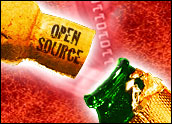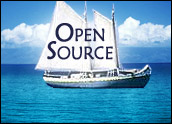
SugarCRM has released a beta version of Sugar 5.0, a platform upgrade that provides new development tools and a new Ajax e-mail client, and is based on a new so-called multi-instance on-demand architecture.
“This is the largest release in the history of the company’s open source project since we founded it three and a half years ago,” John Roberts, CEO of SugarCRM, told CRM Buyer. “It represents the end of the first generation of code we developed, in a way.”
Platform Enhancements
Many of the enhancements were developed with an eye to customers’ requests for greater customization functionality, Roberts said.
For instance, the Module Builder, one of the features of the new platform, allows users to build custom modules from scratch or to combine existing custom objects into a brand new customer relationship management module.
A mortgage broker, for example, might create such a module by combining local listings with its current client list and a list of mortgage brokers active in a certain submarket. Or a financial planner could build its own client database to accommodate all the quirky facts about its clients — say, who has to have that hundred-dollar bottle of wine to be fulfilled — that make their way into a financial planning session.
These custom modules interoperate with Reporting, Workflow and Sugar Studio tools. Another new feature in the platform, a metadata-driven user interface, stores customizations in a metadata repository. That means users will be able to upgrade their customized modules fairly painlessly.
The platform also offers improved access control to better support team hierarchies and access control functions.
Architectural Support
Supporting these changes is the application’s new multi-instance architecture, which takes advantage of horizontal scale-out capabilities of open source software platforms. The result, according to the company, is a significant increase in processing power of commodity hardware and systems management software developed by SugarCRM, which eliminates the tradeoffs between deep customization and easy upgrades.
The benefits to users include better security, flexibility and control. Also, customers can be automatically upgraded to new versions of Sugar, or control when to upgrade. Users will be able to develop new functionality on test servers and then move into production in a multi-instance environment, as well as move between Sugar On-Site and Sugar On-Demand at will.
New CRM Functionality
5.0 is basically a developer’s application; however, there are new features in the CRM suite worth noting.
New CRM features in 5.0 include an Ajax e-mail client integrated with Sugar’s sales force automation functionality. Its design includes drag-and-drop capabilities, search, keyboard shortcuts and a rules wizard, as well as support for folders, contacts and personal in-boxes. It also interoperates with all e-mail servers, which means the client can either complement or replace existing e-mail clients.
The dashboard is also enhanced with new charting capabilities, including support for funnel, pie charts, line and bar graphs and performance gauge chart objects. A new feature also provides for multiple dashboards, which allowa users to access prebuilt or custom dashboards from their homepage.
Future Functionality
Previous upgrades of SugarCRM have focused on multichannel marketing, project management, knowledge base, and customer self-service portal functionality. Future releases, Roberts said, will look at building out unstructured content so users can create blogs and wikis, as well as real-time capabilities such as chat. “We will be basing those development decisions, though, on the feedback we get from users about 5.0,” he said.
Users are likely to clamor for such developments, Bernard Golden, CEO of Navica Software and author of Succeeding with Open Source, told CRM Buyer. “SugarCRM is doing very well, and the reason is that it is already so easy to customize. It is the perfect example of open source capability marrying a business strategy.”
5.0 will be made generally available in October, Roberts said. When it is, it will be SugarCRM’s first rollout on the GNU General Public License version 3, which the company announced it was adopting about a month ago. The GPLv3 license coupled with the module builder could lead to an explosion of module creation — and sharing — Roberts said.
“A developer can create new applications and then also share that package with anyone on the planet with an Internet connection,” he remarked. “It is truly an open system.”
























































